XDefiant Competitive Scene: Teams, Tournaments & Community Insights
Updated On: August 23, 2025 by Aaron Connolly
Overview of the XDefiant Competitive Scene
XDefiant’s competitive scene mixes tactical shooter mechanics with faction-based gameplay. It’s a free-to-play setup that Ubisoft designed for esports.
The game launched with ranked trial modes and some tournament support. But honestly, its competitive future looks shaky after Ubisoft announced they’re shutting it down.
Defining the Competitive Experience
XDefiant sets itself up as a tactical arena shooter where teams of four go head-to-head in objective-based modes. By removing skill-based matchmaking (SBMM) from casual play, it offers a more old-school competitive vibe that a lot of players seem to enjoy.
Each match throws together fast gunfights and unique faction abilities from Ubisoft series like Ghost Recon and The Division. Players can pick different roles and factions, each with its own gadgets and ultimates.
Instead of those huge battle royale lobbies, XDefiant keeps it tight with 4v4 team-based matches. This makes the action easier to follow and rewards strategy over chaos.
Core competitive elements:
- No SBMM in casual
- Faction-based team setups
- Objective-focused modes
- Obvious skill gaps between players
Core Competitive Modes
XDefiant’s competitive play centers on four main game modes that really push teamwork and map control. These modes are the backbone for both ranked and tournament matches.
Escort puts one team on offense, trying to push a moving objective, while the other team defends. You swap sides after each round, and whoever gets further or finishes faster wins.
Occupy is basically a control point mode. Teams fight to hold zones, and you earn points the longer you hang onto them. It’s not just about racking up kills—holding ground matters.
Domination splits the map into several capture points. Teams need to control more than one at a time, so it gets hectic and forces squads to split up and coordinate.
Zone Control mashes up elements from the other modes. Teams capture and defend specific areas, and rotating between them at the right time is key.
Growth of Competitive Play
In May 2024, XDefiant kicked off its competitive push with the All-Star Series tournament. Sixteen former Call of Duty pros battled for £8,000, with Team Aches and Team TeePee making it to the finals.
The XDefiant HP League popped up as a major competition across Europe and North America. The European side, though, never really got off the ground. Building regional scenes turned out to be a struggle.
Streaming numbers looked good at first but dropped fast after launch. That quick fall in viewership made a lot of folks question if XDefiant could really last as a competitive game.
Key tournament notes:
- All-Star Series brought in veteran FPS players
- HP League tried to expand regionally
- Prize pools stayed pretty small
- Twitch and YouTube views fell off hard after launch
Key Features That Attract Competitors
XDefiant draws in competitive players with some smart design choices. No SBMM in casual play means skilled players can really flex.
Faction diversity adds a layer of strategy. Teams need to balance different gadgets and ultimates, but the gunplay still takes center stage.
A lot of players say the game’s visibility and movement feel better than recent Call of Duty releases. Clear enemies and snappy movement are must-haves for high-level play.
Weapon attachments and customization actually matter here. You can tweak your loadout for different maps and team strategies, not just for looks.
But with Ubisoft pulling the plug, all these competitive perks don’t really matter anymore. The shutdown pretty much ends any shot at a tournament scene.
Ubisoft’s Role in Shaping Competition
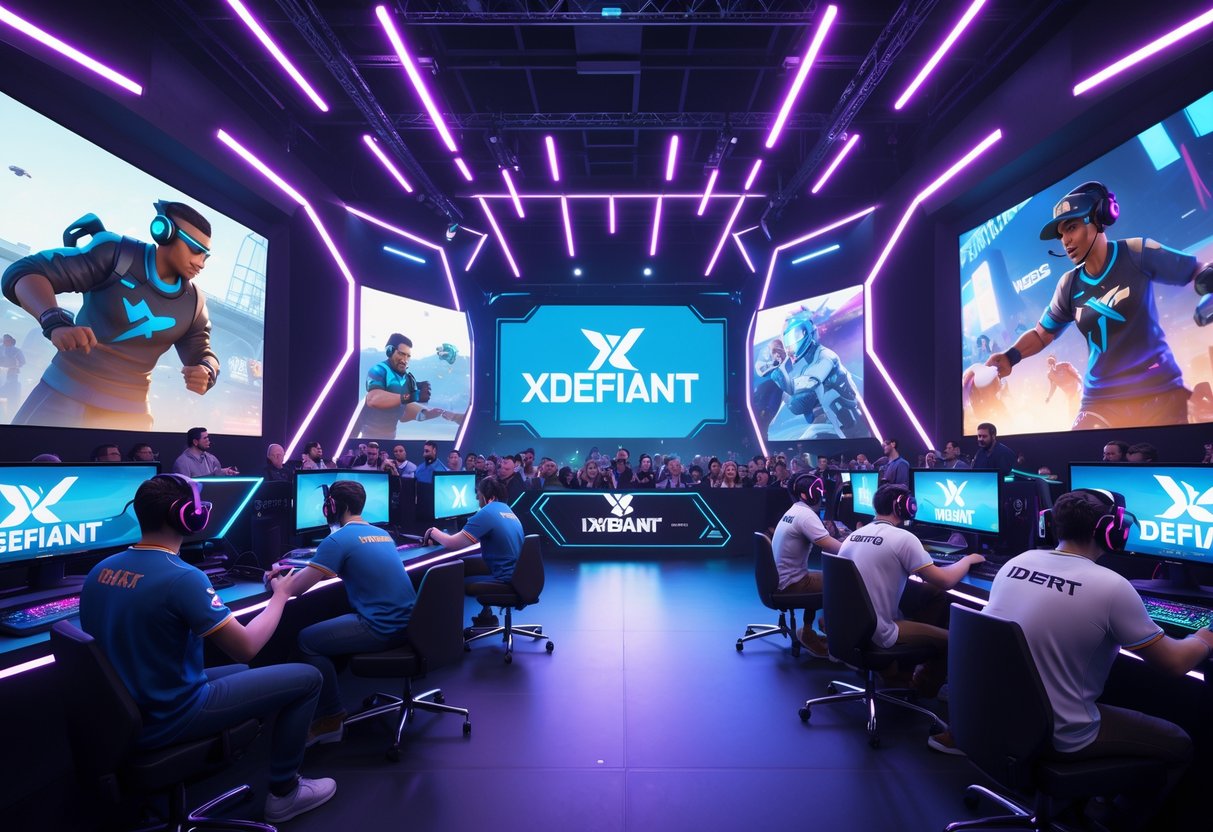
Ubisoft took things slow with XDefiant’s competitive scene. They planned to wait until 2025 before launching any official esports efforts.
Instead of rushing into tournaments, they focused on stabilizing the core game first.
Official Esports Initiatives
Ubisoft CEO Yves Guillemot said he wanted XDefiant to become “a serious esport.” Still, the company decided not to run official tournaments until at least 2025.
That slow approach stood out, especially since VALORANT had its first big tournament just three months after launch. The Finals announced tournaments six months in.
Ubisoft knew XDefiant was missing key competitive features. Without private lobbies and spectator tools, they couldn’t really start tournaments. It seemed responsible, but also risky.
The publisher had experience from Rainbow Six Siege, where they ran huge events like the Six Invitational in São Paulo. But moving that know-how over to XDefiant wasn’t easy.
Marie-Sophie de Waubert, a Ubisoft exec, later admitted they “struggled to attract and retain enough players in the long run.” That lack of players basically killed their esports plans before they could even get started.
Support for Organised Play
Ubisoft barely supported grassroots tournaments in XDefiant’s early days. No private lobbies meant community-run events just couldn’t happen.
Streamers and content creators saw their numbers tank within weeks. Twitch viewership plummeted, which made it tough for a competitive scene to grow naturally.
Ubisoft kept pouring resources into Rainbow Six Siege instead. That game already had all the infrastructure and pro teams. XDefiant ended up fighting for attention even inside Ubisoft.
Quick win: Other successful competitive games launch with basic tournament tools right away. XDefiant’s lack of these features made it look like Ubisoft wasn’t sure about the game’s future.
Players kept asking for ranked modes and better matchmaking. But honestly, those systems never caught up to shooters like Call of Duty or VALORANT.
Developer Roadmap for Competition
Ubisoft’s plans for competitive play stayed pretty vague. They promised improvements, but rarely gave clear timelines or details.
Some internal sources said development teams couldn’t agree on the game’s competitive direction. Conflicting visions led to slow progress.
The roadmap listed:
- Private lobbies
- Spectator mode
- Better anti-cheat
- Ranked gameplay
Warning: None of these features arrived before XDefiant shut down in June 2025. The timeline just wasn’t realistic with all the development hurdles.
Ubisoft knew what competitive games needed—Rainbow Six Siege proved that. But they couldn’t quite adapt those lessons to XDefiant’s faster, more frantic gameplay.
When Ubisoft announced the shutdown, it was clear: without enough players, they couldn’t justify any more esports investment.
XDefiant Official Tournaments and Events
Ubisoft kicked off a few official tournaments to lay the groundwork for XDefiant’s competitive scene. The All-Star Series brought in pro players, and the company started building both grassroots and top-tier events to grow the game’s esports ecosystem.
Premier Tournaments
The competitive scene started with structured tournaments meant to spotlight high-level play. Ubisoft and other organizers ran a mix of events, from small community matches to bigger pro showcases, with cash prizes on the line.
Most tournaments stick to the 4v4 format as the standard. Events usually run elimination brackets and give out prize money to the top teams.
Current structure:
- Invite-only pro events
- Open sign-up competitions
- Regional qualifiers
- Prize pools from £20 to £7,500
The focus stays on teamwork and strategy. Best-of-three matches are the norm to decide winners.
All-Star Series and Exhibition Events
The XDefiant All-Star Series was the first big event. Sixteen pro players faced off in 4v4 matches for a £7,500 prize pool.
Instead of live streams, Ubisoft dropped edited episodes on YouTube. That let them polish the production and add in some solid commentary.
The series featured seasoned FPS pros from other games. Ubisoft devs even jumped in to show off strategies and mechanics.
Exhibition features:
- Pro player spotlights
- Dev participation
- Strategy breakdowns
- Community engagement
These events aren’t just for entertainment—they help teach new players the ropes, too.
Future Tournament Plans
Ubisoft said they’d expand XDefiant’s competitive offerings with ranked modes and more organized leagues. They talked about supporting both pro and grassroots scenes.
Future tournaments will probably include seasonal competitions with bigger prize pools. As the player base grows (well, if it had grown), regional tournaments would have become a thing.
Developers sounded committed to long-term esports investment. They hinted at partnerships with major tournament organizers and streaming platforms.
Planned features:
- Full ranked mode
- Seasonal leagues
- Regional championships
- Bigger prize pools
Tournament infrastructure kept growing as more players got into competitive play—at least, for a while.
Ranked Play and Progression Systems
XDefiant’s ranked scene revolves around a 4v4 mode that unlocks at level 40. There are seven different tiers, each with exclusive rewards, and the system tries to keep matches fair with skill-based algorithms.
Ranked Trial Run Mode
Before XDefiant’s full competitive launch in Season 1, we got a trial version that let players try out competitive play without the stress of permanent ranks.
The trial run offered basic matchmaking and let players get a feel for the 4v4 format. You could mess around with different strategies and loadouts while devs collected important data on balance and player habits.
Key differences from full ranked:
- Fewer rewards
- Simpler ranking
- No seasonal resets
- Limited game modes
This testing phase helped spot problems like players quitting and team imbalances. Feedback from the trial led to features like the match cancellation system.
The trial also set the level 40 unlock, making sure only experienced players jumped into ranked.
Ranking Tiers and Rewards
There are seven ranks in XDefiant, and players climb them each season. Every tier hands out exclusive cosmetics to show off your achievements.
Ranking breakdown:
- Bronze – “Paintballer Gloss” Rare Player Card
- Silver – “Paintballer” Rare Seleste Skin
- Gold – “Paintballer” Rare M4A1 Skin
- Ruby – “Paintballer” Rare Green Skin
- Emerald – “Paintballer” Rare L115 Skin
- Diamond – “Paintballer” Rare Kaptan Skin
- Legends – “Paintballer” Epic MP7 Skin (top 500 only)
Most ranks have 10 levels before you move up. Legends is special—only the top 500 players worldwide make it.
Restrictions:
- Parties max out at 4 players (within 15 levels)
- Diamond+ players can only duo queue
- Seasons reset most players back to Silver
Player Progression and Stats
You earn Ranked Points (RP) based on how you play. The system looks at your personal skill, team performance, and what the match expected from you.
RP factors:
- Win or loss
- K/D ratio
- Objectives completed
- Team skill ratings
If you’re supposed to win and do, you get a small RP bump. Pulling off an upset against higher-ranked teams nets you a lot more. Losing matches you were expected to lose doesn’t hurt much.
The system tries to protect you from unfair matches. If someone quits mid-game, you lose less RP. If things get really lopsided, the game just forgives the loss entirely.
Weekly warm-up weeks kick off each season. You can practice without risking RP, which is nice for adjusting to new metas or content.
Skill-based matchmaking tries to balance connection quality, rank, party size, input method, and where you are in the world. The goal? Keep matches as fair as possible.
Team Structure and Notable Organisations

When XDefiant’s competitive scene kicked off, former Call of Duty pros jumped in first. New organisations scrambled to form rosters, even though the game was still figuring out its competitive identity.
Teams have to deal with a lot of uncertainty as they try to build around a title that’s still getting its feet under it.
Major Teams and Rosters
XDefiant teams started forming before the public even got their hands on the game in May 2025. The All-Star Series split established pros into four squads, each led by a veteran captain.
Team Aches brought together Patrick “Aches” Price, Ian “Crimsix” Porter, Nathaniel “Pentagrxm” Thomas, and Josiah “Slacked” Berry. Team Pacman included Jonathan “Pacman” Tucker, Jordan “JKap” Kaplan, Ian “Enable” Wyatt, and Doug “Censor” Martin.
Team TeePee had Tyler “TeePee” Polchow, Michael “Spacely” Schmale, Johnathan “John” Perez, and Dillon “Attach” Price. Team Karma featured Damon “Karma” Barlow, Bryan “Apathy” Zhelyazkov, Christopher “Parasite” Duarte, and Andres “Lacefield” Lacefield.
Delco Gaming and other new orgs announced rosters even though hardly anyone could actually play the game yet. These early teams don’t always last, though—competitive scenes shift fast.
Pathways for Aspiring Players
XDefiant showed up with a Ranked Trial Run Mode so players could work on their skills before the scene really took off. It works as a warmup for when things get serious.
Most pros moving to XDefiant already know their way around other tactical shooters. That makes it harder for total newcomers to break in.
Since there’s no skill-based matchmaking in casual modes, players end up facing a wider range of skill levels. This setup actually helps spot raw talent better than strict matchmaking would.
You can get your name out there through streaming platforms and community tournaments. But honestly, XDefiant content lost a lot of viewers in its first month, so exposure isn’t easy right now.
Organisation Support and Sponsorships
Big esports orgs aren’t exactly rushing to invest in XDefiant teams. With Twitch numbers dropping and the game’s competitive future up in the air, sponsorship decisions get pretty complicated.
Ubisoft kicked things off with a $10,000 All-Star Series prize pool. It’s not much, but it shows they’re testing the waters instead of diving in.
Most teams form up without much backing from organisations. Roster announcements focus more on hyping up individual players than on full support systems.
Before sponsors start pouring in, the scene needs real tournament infrastructure. Right now, the uncertainty around XDefiant’s future makes big brands hesitate.
Community Engagement and Online Forums
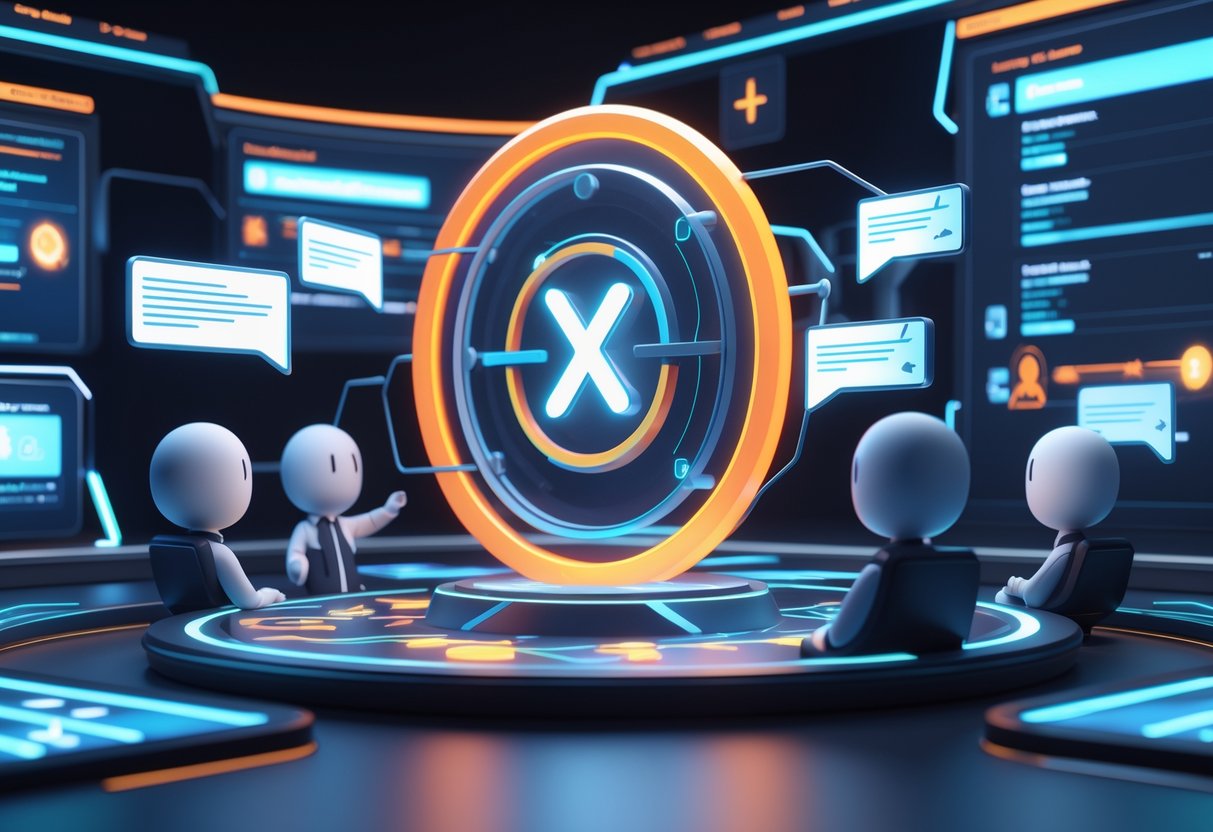
The XDefiant competitive scene really lives through online communities where players swap strategies, debate the meta, and pull together events. Reddit is the go-to spot for competitive discussions, while niche forums help both newbies and veterans sharpen up.
Navigating Reddit Communities
Reddit hosts the busiest XDefiant groups around. Players jump in every day to talk loadouts, tournament prep, and whatever else is hot.
Quick win: Check the hot posts first—they’ll show you what everyone’s buzzing about.
New players sometimes get lost in the flood of info. It’s a good idea to start with the pinned posts since they usually have the basics and community rules.
Communities use post flairs like “Strategy,” “Competitive,” or “Discussion” so you can zero in on what matters to you.
Reddit community perks:
- Live chats during tournaments
- Fast updates on patches and meta changes
- Advice straight from experienced players
- Weekly discussion threads to keep things moving
Role of r/XDefiant and r/XDefiantcompetitive
r/XDefiant acts as the main hangout, and Ubisoft devs even pop in sometimes. You’ll find everything there: casual play, competitive talk, news, and more.
People discuss balance, new stuff, and upcoming tournaments pretty often. Developers answer questions and drop official news right in the threads.
r/XDefiantcompetitive sticks to the hardcore side. It’s smaller but packed with deep dives into strategy and tournament breakdowns.
What each subreddit offers:
| r/XDefiant | r/XDefiantcompetitive |
|---|---|
| General game discussion | Advanced strategy guides |
| Developer updates | Tournament analysis |
| Casual and competitive content | Meta discussions |
| Larger, more active community | Focused competitive audience |
If you’re serious about improving, the competitive subreddit is the place to be. You’ll find more about team setups, map tactics, and pro player analysis.
Popular Community Events
Players set up their own tournaments on these forums, so you don’t have to wait for Ubisoft to host something. Some are small brackets, others turn into pretty big community championships.
Warning: Double-check any tournament before joining—stick to official channels so you don’t get burned.
Weekly threads keep people talking between big events, with stuff like “Meta Monday” and “Tournament Tuesday” always popping up.
Sometimes the community starts their own challenges—maybe a loadout contest or a strategy share. These keep things interesting when there’s not much else going on.
Viewing parties for major tournaments are a thing too, which is cool even if you’re just watching. Discord servers let everyone chat live during matches.
The best community events usually hand out small prizes—think in-game skins or just bragging rights, not big cash.
Gameplay Balance and Competitive Integrity
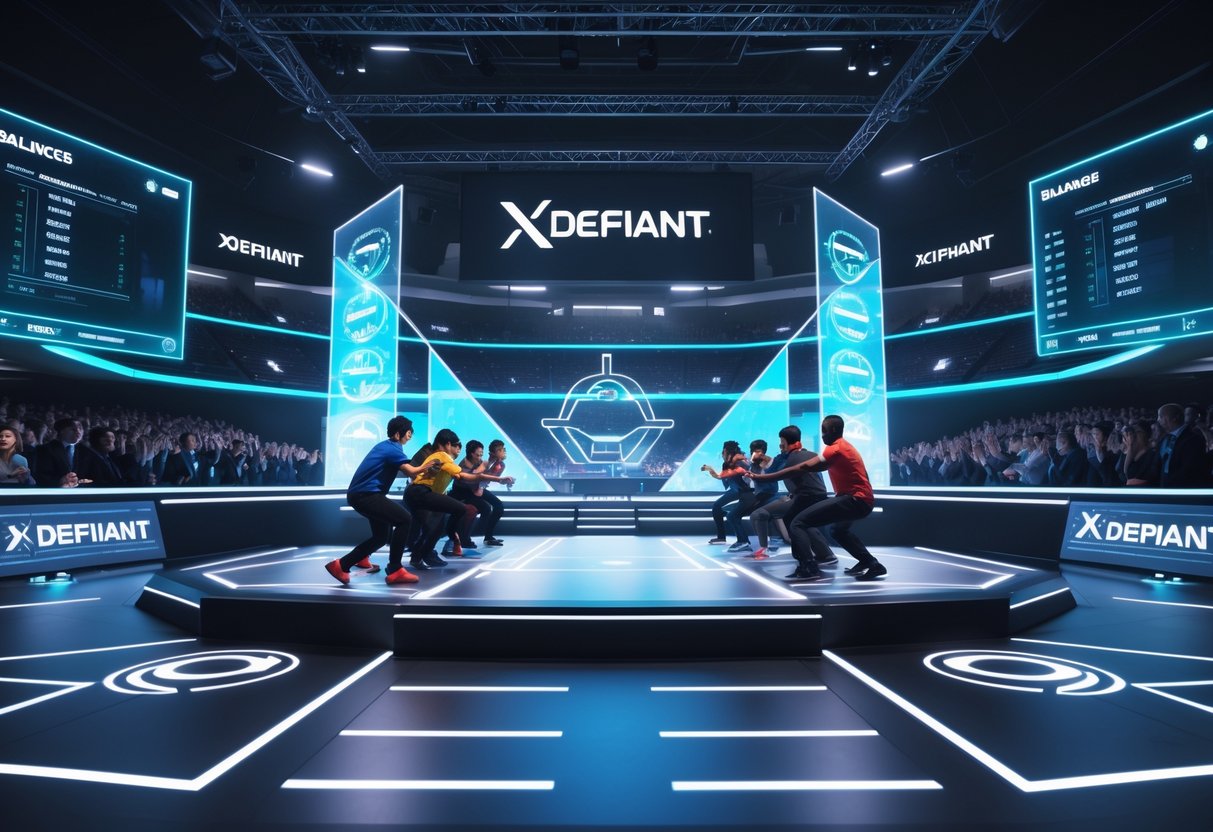
Balance patches and fair play rules shape XDefiant’s growth as a competitive shooter. Ubisoft has to keep every faction useful, stop cheaters, and juggle crossplay headaches.
Impact of Balance Updates
XDefiant didn’t launch perfectly balanced—some factions just stomped others out of the gate. Certain abilities felt way too strong, and the meta got weird fast.
Balance headaches right now:
- Some faction abilities dominate specific modes
- Weapons shift the meta toward certain playstyles
- Map layouts help certain factions too much
Ubisoft keeps rolling out updates to fix these problems. Every season brings new tweaks based on what players do and what the community says.
They focus on “competitive integrity,” trying to make sure nothing gets too overpowered. The idea is to keep games fair without making every faction feel the same.
When the balance feels right, matches get more strategic and team-focused instead of just relying on busted abilities.
Anti-Cheat Measures
XDefiant uses several anti-cheat tools to keep things fair. The system watches player behavior and stats, looking for anything sketchy.
Anti-cheat highlights:
- Live monitoring during matches
- Performance data analysis
- Hardware checks to block ban evaders
- Manual reviews for reported players
Ubisoft has dealt with cheaters in their other games, so they’ve brought that experience here.
Good anti-cheat makes people trust ranked modes more. Players are way more likely to stick around if they know cheaters won’t ruin their games.
Ban waves come out regularly. Ubisoft usually posts updates to let everyone know what’s happening on the anti-cheat front.
Crossplay Considerations
XDefiant lets PC and console players face off, but that brings its own set of problems. Input methods and hardware make a real difference in how matches play out.
Platform differences:
- PC players often get higher frame rates
- Console players use aim assist for controllers
- Hardware specs can change performance a lot
The game lets you pick input-based matchmaking, so you can stick with players using the same controls.
Ranked play might split queues or add more balancing tweaks. The goal is to keep things fair for everyone, no matter what platform they’re on.
Ubisoft keeps an eye on crossplay balance by tracking data and listening to feedback. They adjust aim assist and other settings as needed.
Esports Scene Development and Challenges
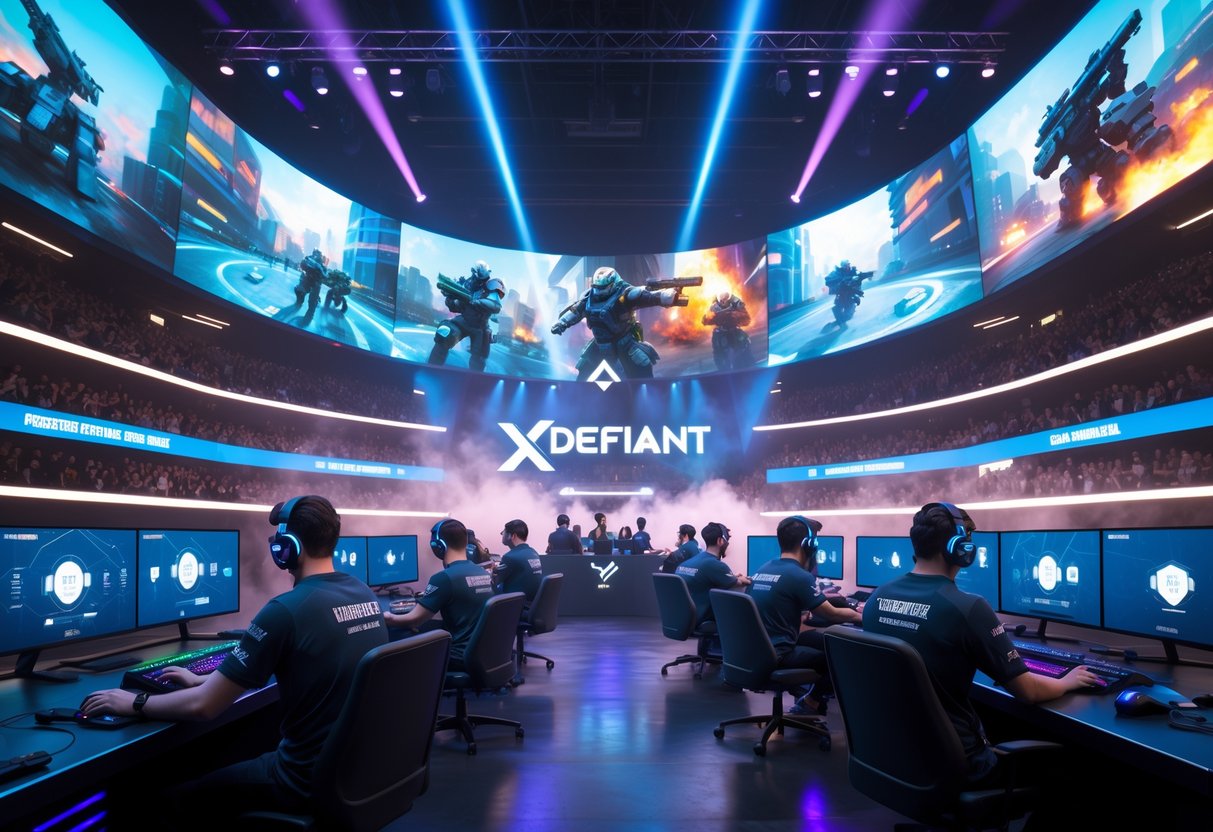
XDefiant’s competitive scene faces some real obstacles. There’s not much official support, viewership’s slipping, and nobody’s sure what comes next. Still, the community isn’t giving up, even if the experts aren’t sure grassroots efforts can keep things alive.
Barriers to Entry
Right now, XDefiant’s scene is missing the basics that most top esports have. There aren’t enough spectator tools or ways to set up custom matches.
Ubisoft says they’ll wait until year two to launch official competitive support. That leaves tournament organisers to make do with what they’ve got.
What we’re missing:
- Good spectator camera controls
- Custom private match options
- Tournament-level anti-cheat
- Official ranking systems
Twitch viewership tanked just a month after launch. Streamers and creators are already looking elsewhere.
Grassroots events like the XDefiant HP League are stepping in. This EU and NA league has more than 64 teams across six divisions and a £10,000 prize pool.
Quick win: Follow grassroots tournaments on social media to see if the scene picks up before dropping any big investments.
Comparisons with Other Esports
XDefiant launched with a lot of the stuff you’d expect from a competitive shooter—unique roles, objective modes, clear skill gaps.
But it doesn’t have the years of development that games like Counter-Strike or Overwatch got. Those games had time to build up their scenes.
Quick comparison:
| Feature | XDefiant | Counter-Strike 2 | Overwatch 2 |
|---|---|---|---|
| Official tournaments | None yet | Multiple yearly | Overwatch League |
| Spectator tools | Limited | Advanced | Professional-grade |
| Ranked system | Coming later | Established | Fully integrated |
| Prize pools | Community-funded | Millions yearly | Corporate-backed |
Sponsors want to see staying power before they commit. Plenty of shooters have fizzled out after the early hype faded.
Warning: We’ve seen a bunch of “esports-ready” games flop when devs stop supporting them after a rough start.
Community Hopes and Criticisms
The XDefiant community still thinks the game could go far competitively, even with all the current issues. Players point out the tactical depth you get when teams really work together.
Reddit threads are full of people asking for ranked modes now. Some even say a real competitive structure would make casual play better too.
What players want:
- Team-based ability combos
- Better ways to communicate in-game
- A meta that shifts with faction picks
- Regular updates focused on competition
But critics worry Ubisoft’s slow approach will kill the scene before it gets going. They say Ubisoft wants XDefiant to be “a serious esport” but isn’t backing that up yet.
Some compare it to Rainbow Six Siege, which took a while to find its footing. Others think XDefiant might not get that same long-term support.
Next step: Jump into community Discords to keep up with the latest and find local tournaments.
Meta, Mechanics, and Advanced Strategies
The XDefiant competitive meta revolves around three top weapons and fast-paced movement that reward aggressive positioning. If you want to stand out, you’ll need to get a handle on faction synergies and smart map control—those really set apart the casuals from the serious contenders.
Current Competitive Meta
Right now, the ACR assault rifle, MP7 SMG, and TAC-50 sniper absolutely run the show in competitive play. These guns just melt opponents, no matter the range.
The ACR shines at medium range because you can actually control its recoil. It racks up the fastest kills inside 33 meters, which covers most fights that matter. The MP7? It’s a beast up close, with snappy handling and a ridiculous fire rate.
If you put a TAC-50 sniper in the hands of a skilled player, it can feel a bit broken. One shot to the chest or head drops enemies instantly, so it’s perfect for locking down angles and stopping enemy pushes.
Libertad’s BioVida Boost gives teams a huge edge by keeping everyone healed during fights. Cleaners love their Incinerator Drones and burn damage—they use them to lock down tight spaces and force enemies out.
Most players pick Frag Grenades or Sticky Grenades. Frags have a bigger blast and let you time your throws, while Stickies force people to move and hit hard if you stick them.
When it comes to attachments, everyone seems to favor mobility over recoil control. You’ll see Muzzle Boosters, Rapid Fire Barrels, and Quick Draw Grips on top builds. Fast aim-down-sight and sprint-to-fire speeds just matter more than pure stability.
Key Game Mechanics
Movement mechanics really separate high-level XDefiant players from the rest. Slide-cancelling keeps you moving fast and makes you harder to hit.
Players jump-shot or drop-shot to throw off enemy aim during duels. It’s a classic trick, but it works.
Sprint-to-shoot times can literally save your life. Most competitive folks go for attachments that shave off those milliseconds instead of just boosting damage.
Faction abilities need good timing and smart positioning. Phantom shields block off sections but leave your sides open. DedSec tools counter enemy electronics pretty well.
Teams fight for map control by holding strong positions and rotating carefully. They set up crossfires but avoid pushing too far out and getting picked off.
Switching weapons is usually faster than reloading if you’re fighting more than one person. Players actually use their sidearms to finish fights, not just as a backup plan.
Audio cues matter a ton. Footsteps, reloads, and ability sounds all help you figure out where the enemy is and what they’re about to do.
Popular Strategies Among Top Players
Top players lean into aggressive positioning. They push up constantly, not just holding corners, relying on Libertad healing to keep the pressure up.
Faction stacking is popular—teams often run multiple Cleaners or Libertad members. Double healing or stacking incendiary damage can swing team fights.
Teams time their equipment with faction abilities. Cleaners use drones to herd enemies into grenade blasts, and EMP grenades knock out Phantom shields before a big push.
Players swap loadouts depending on the map or mode. Snipers rule long-range maps, while SMGs take over tight spaces.
Teams manipulate spawns by locking down certain areas. They keep up pressure to force enemies to respawn in predictable spots.
Ability cycling is a thing—players coordinate cooldowns so someone always has a key ability ready, whether it’s healing, drones, or shields.
Technological Requirements for Competitive Play
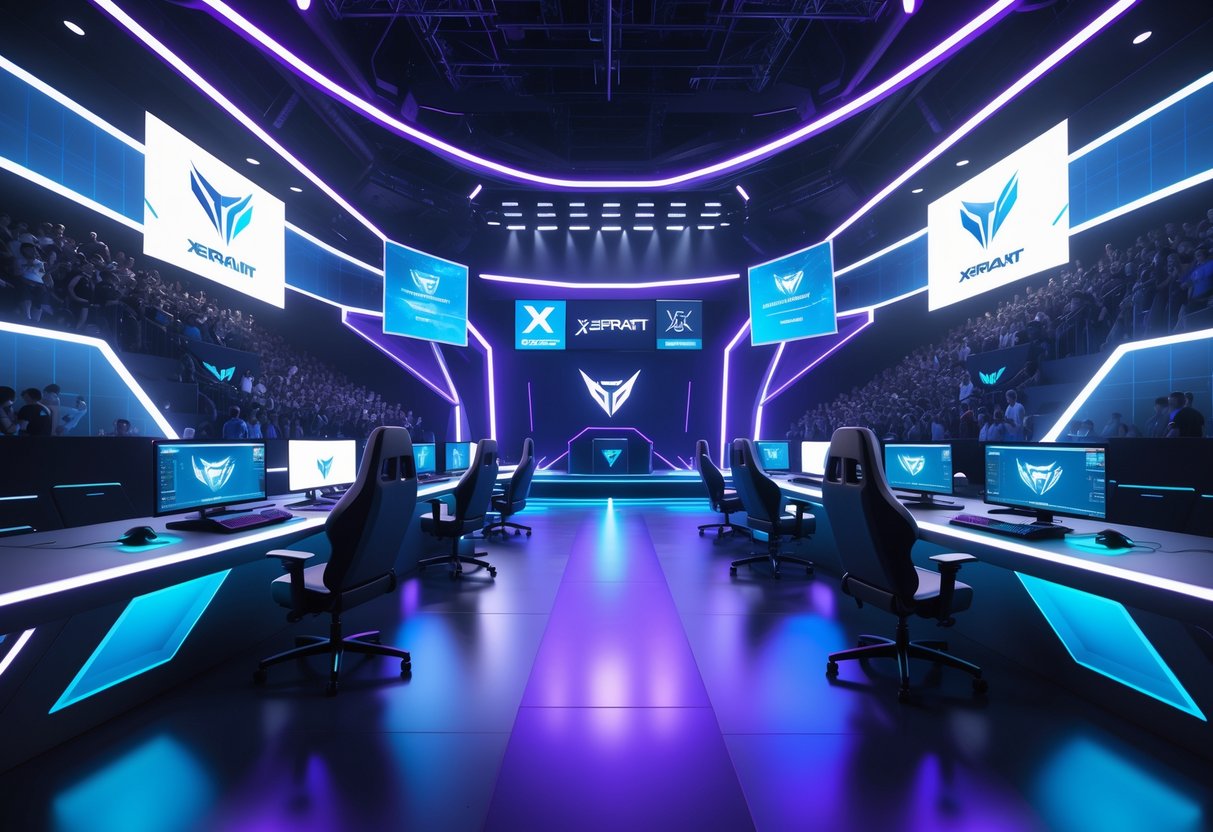
If you want to play XDefiant competitively, you’ll need more than just a decent PC. Internet stability and system performance suddenly mean everything when every millisecond counts.
System Requirements
XDefiant runs on both DirectX 11 and 12, so it works on a lot of PCs. The game lets you uncap your framerate and supports ultrawide monitors, which is a nice touch for competitive folks.
Minimum specs:
- Quad-core processor (nothing ancient)
- 8GB RAM
- DirectX 11 graphics card
- 35GB storage
For competitive play:
- High-end CPU for smooth frames
- 16GB RAM for multitasking
- Graphics card that can do 144fps or more
- SSD for quick loading
Most players aim for 240fps at 1080p. That’s the sweet spot for low input lag and smooth aiming.
NVIDIA Reflex drops system latency even further. If you’re serious about XDefiant’s fast gunfights, this feature is worth having.
Network Performance and Stability
Honestly, your internet connection can make or break you in XDefiant. Packet loss and high ping will ruin your day, no matter how good you are.
Minimum network:
- 25Mbps down
- 5Mbps up
- Under 50ms ping to servers
- Wired ethernet is best
WiFi adds lag and can drop packets. If you’re serious, just plug in with ethernet.
XDefiant servers favor players with lower ping for hit detection. If you’re at 20ms, you’ll notice it compared to someone at 60ms.
If your ping is always over 40ms, think about upgrading your internet package. Many players also buy gaming routers with QoS to prioritize game traffic.
Console vs PC Experience
PC players get a noticeable edge in XDefiant. Higher framerates, custom graphics settings, and mouse aiming all add up.
PC perks:
- 240fps+ possible
- Adjustable field of view
- Mouse for aiming
- Tweak graphics for better visibility
- SSDs load faster
Console drawbacks:
- 120fps max
- Locked graphics settings
- Rely on aim assist
- Slower loading without SSD
Most competitive players pick PC for these reasons. Console players can still compete, but it’s harder at the top.
With crossplay, console players go up against PC users all the time. That’s tough for controller players trying to match mouse accuracy.
Future Outlook for the XDefiant Competitive Scene

The XDefiant competitive scene feels like it’s at a turning point. Ubisoft keeps promising new features, but the community’s getting impatient.
Recent updates hint at real progress toward an esports ecosystem, but everything depends on how fast Ubisoft can deliver—and if players stick around.
Upcoming Developments
Ubisoft says they want XDefiant to become a competitive powerhouse. Year Two is supposed to be the big launch for XDefiant esports, according to Ubisoft.
Features in the works:
- Custom game modes with esports rules
- Full spectator system for tournaments
- Player management tools (kick/move)
- Tournament game mode modifiers
- Match countdown systems
Dataminers found code that backs this up—these features are actually being built right now. That’s a solid foundation for real tournaments and leagues.
If you’re interested, keep an eye on XDefiant’s official channels for beta tests of these new features.
Ranked trial mode is already live, giving players a taste of what competitive XDefiant could be. Early feedback says ranked play feels way more intense, with real teamwork and ability usage.
Potential for Global Expansion
Ubisoft’s CEO Yves Guillemot wants XDefiant to be “a serious esport.” That kind of backing usually means real investment in international tournaments.
The free-to-play model makes global participation a lot easier. Anyone can jump in, just like Valorant or CS2.
Regional expansion could look like:
- European tournaments building on Rainbow Six Siege’s scene
- North American leagues using Ubisoft’s network
- Asia-Pacific events (tactical shooters do well there)
But here’s the thing: Twitch viewership has dropped off hard after launch. That’s a bad sign for long-term hype.
If Ubisoft wants XDefiant to matter, they need to move fast. Players are already looking at other games.
Predictions and Expert Opinions
Analysts seem cautiously hopeful, but the clock’s ticking. James Connolly, a well-known gaming expert, says successful esports usually get their scenes going within six months of launch.
What’s working for XDefiant:
- Competitive mechanics (roles, objectives)
- Obvious skill gap between casual and comp play
- Ubisoft’s Rainbow Six esports experience
What’s holding it back:
- Falling viewership and less community buzz
- Tough competition from existing tactical shooters
- No one-life mode like Search and Destroy (yet)
The next year is going to decide everything. If Ubisoft delivers on custom games and spectator tools—and keeps players interested—XDefiant could carve out a solid competitive scene.
Most people see it hitting tier-two esports status, not challenging Counter-Strike or Valorant directly. But honestly, that’d still be a win for a new shooter in a crowded market.
Frequently Asked Questions
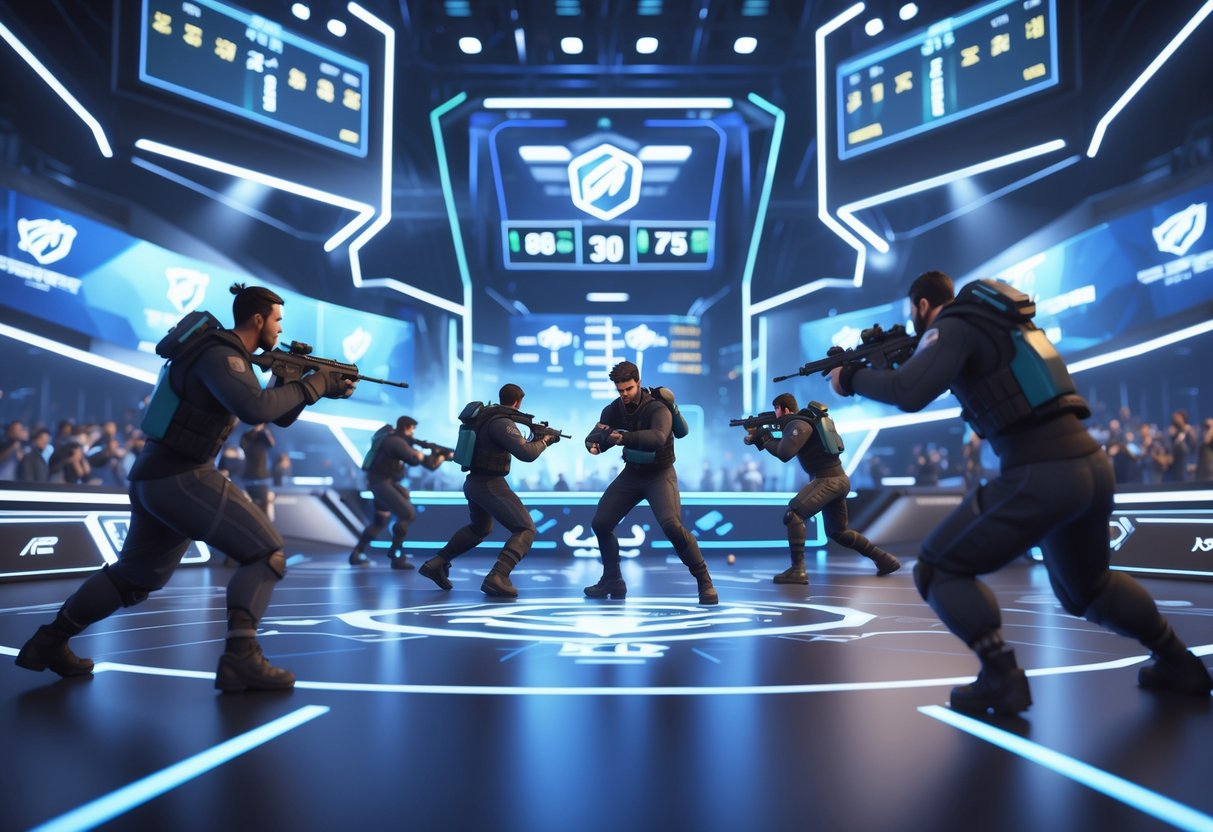
A lot of players want to jump into XDefiant’s competitive scene, but there are always questions. Here’s what most people ask about team play, rankings, and tournaments.
What are the most effective strategies for team play in competitive matches?
If you want to win in XDefiant, team communication is everything. Your squad needs to constantly call out enemy spots, ability cooldowns, and which objective to hit next.
Try to build ability synergy with your factions. Phantoms feed your team intel, Libertad keeps everyone alive during pushes, and Cleaners lock down areas with fire.
Map control wins more games than flashy plays. Hold key sightlines and rotate as a group—don’t split up chasing kills.
Practice your callouts in casual games. Use real location names or compass directions, not just “over there.”
Could you shed light on the ranking system and how promotions are determined?
XDefiant runs a performance-based ranking system. Wins matter, but so do your stats and how you help your team.
The game tracks more than just kills and deaths. Objective captures, damage, and support actions all count toward your rank.
Placement matches set your starting rank each season. If you play with a regular team for placements, you usually start higher.
Rank decay kicks in if you go inactive for a few weeks. You gotta play regularly to keep your spot.
What does the current meta look like, and which characters are the top picks?
Phantoms are everywhere in comp play because their intel abilities are just too good. Teams use them to make smarter moves.
Libertad is still a must for aggressive teams. Their healing lets squads play fast and take risks.
DedSec can make big plays with flanks but needs a skilled player to work. Some teams struggle to coordinate with DedSec mains.
The meta shifts with every balance patch. If you want to keep up, follow top players and tournament streams.
Where can players find resources for improving their gameplay and tactics?
The XDefiant subreddit is super active for meta talk and strategy tips. Veterans answer a lot of questions there.
Look up YouTube guides from competitive players. They break down positioning, ability use, and teamwork. Focus on creators who play ranked, not just pubs.
Join Discord servers for comp XDefiant. You’ll find scrims, team-finding, and instant feedback.
Watch tournament VODs to see how pros move and coordinate. Pay attention to how teams combo abilities and rotate across the map.
How does the tournament and event structure work for aspiring professionals?
XDefiant kicked off with the All-Star Series, where ex-Call of Duty pros battled for £8,000. That event set the tone for comp rules.
The XDefiant HP League runs in Europe and North America, offering regular competition. These regional tournaments help players get experience before bigger events.
Most tournaments use 4v4 formats and objective-based modes. Matches are usually best-of-five or best-of-seven.
Right now, events focus on building the scene—not massive prize pools. Early grinders can make a name for themselves as things grow.
What updates have been introduced to balance gameplay in the latest patch?
The latest balance updates aim to rein in faction abilities that have been dominating competitive play.
Developers tweaked ability cooldowns and their effectiveness to encourage more varied team lineups.
When it comes to weapon balancing, the team wants every gun category to feel unique.
Assault rifles, SMGs, and sniper rifles each fill their own niche in competitive matches.
The devs also made some map tweaks to fix sightline issues and spawning problems.
These changes should make matches feel a bit fairer, no matter which game mode you’re in.
The development team keeps a close eye on competitive feedback.
They tend to weigh pro player opinions more than casual gameplay stats, which makes sense if you think about it.
